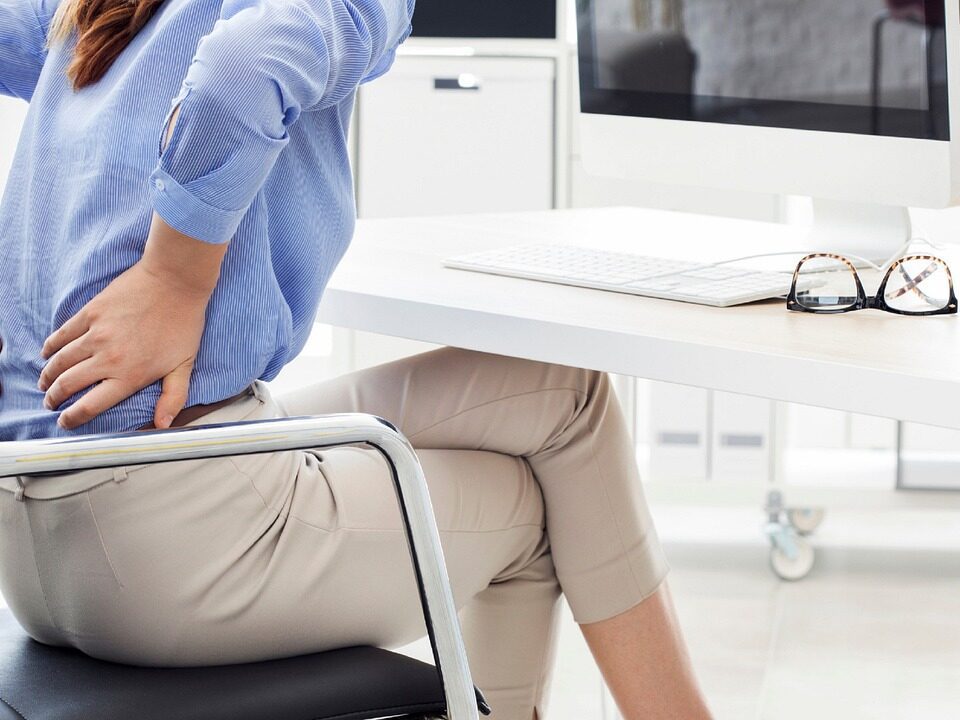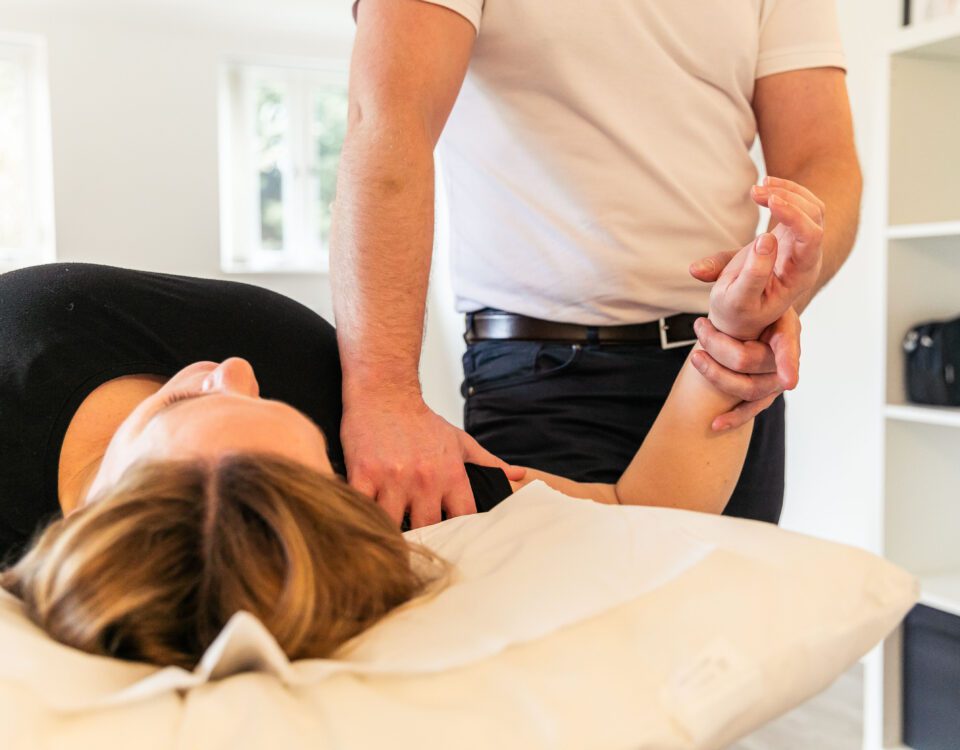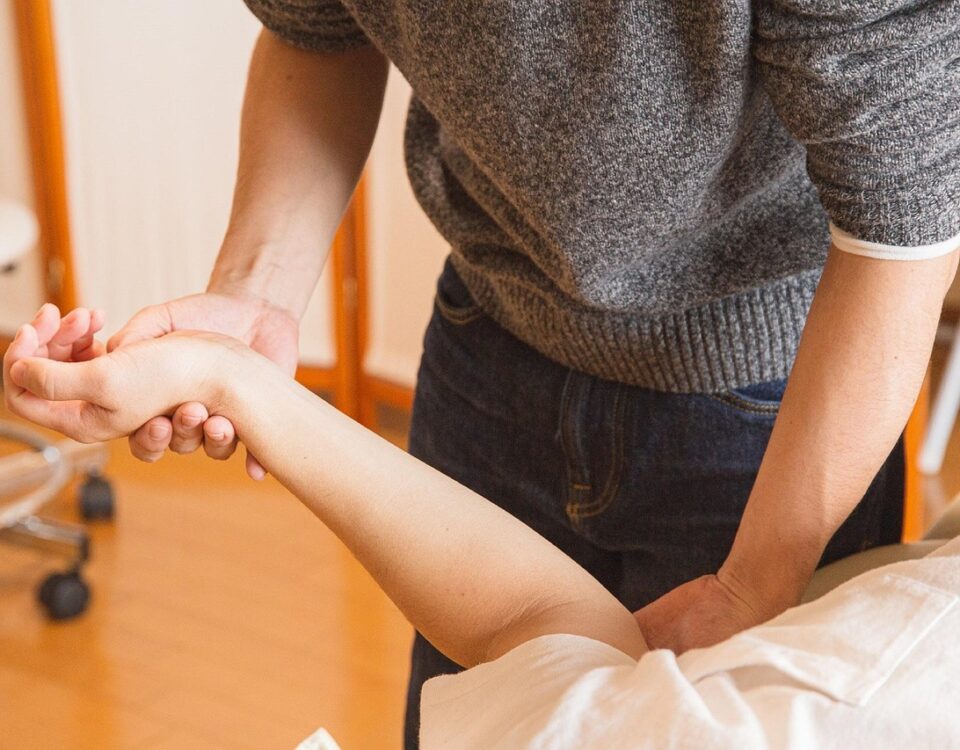
The Role of Osteopathy in Sports Injury Rehabilitation
29 February 2024
The Ultimate Guide for Recovery After a Half Marathon
16 March 2024Osteopathy for Desk Workers: Alleviating the Aches and Pains of Sedentary Lifestyles
In today’s modern world, many of us find ourselves spending the majority of our days seated at desks, staring at our computer screens. While this sedentary lifestyle has become the norm for millions of people, it often comes with a host of aches, pains, and discomforts. Today we are going to look at why we experience these types of aches and pains. Plus we will also look at some simple ways that osteopathy for desk workers can start to combat them.
Before diving into how osteopathy can help if you’re stuck at a desk all day, it’s essential to understand the impact of a sedentary lifestyle on the human body. Our bodies are designed for movement. From the moment we’re born, we’re meant to explore, play, and engage in physical activity. Most of our bodily functions become more efficient when we move (like blood flow and digestion). However, the demands of modern life often confine us to desks and chairs for extended periods of time.
So what’s the big deal? Sitting for long periods can lead to a range of health issues, including:
Muscle stiffness and tension
Remaining in one position for too long can cause muscles to tighten and become stiff, leading to discomfort and pain.
Poor posture
Slouching at a desk can result in poor posture, which can contribute to back, neck, and shoulder pain.
Reduced circulation
Sitting for extended periods can impede blood flow, leading to issues such as swollen ankles and varicose veins and even muscular pain.
Increased risk of chronic diseases
Studies have linked prolonged sitting with an increased risk of obesity, diabetes, heart disease, and certain types of cancer.
While it’s clear that prolonged sitting can have detrimental effects on our health, many of us have no choice but to spend hours at our desks each day due to work commitments. Luckily a visit to your friendly neighbourhood osteopath is a great way to help combat these hours that we are sat at a desk.
How can an osteopath help?
For desk workers, osteopathy offers a range of benefits for alleviating the aches and pains associated with a sedentary lifestyle:
Pain relief
Osteopathic treatment can help relieve muscular tension and discomfort, providing relief from back, neck, and shoulder pain. This would be done predominantly through soft tissue massage but can also include some gentle joint manipulations.
Improved mobility
When tissues are in restricted positions for long periods they can become “stiff and tight” By addressing these restrictions in the muscles and joints with gentle manipulation and stretching of muscles and tendons, osteopathy can improve range of motion and flexibility, making it easier to move freely and reduce the discomfort you feel.
Improved stability
By introducing some local muscular strengthening exercises (particularly the upper back) will help tissues cope with the demands that are put on them by being sat at a desk in a relatively static position for long periods of time.
Stress reduction
Osteopathic techniques promote relaxation and stress relief, helping to alleviate the physical and mental tension that can accumulate during long hours at a desk particularly in a busy work environment.
Prevention of future injuries
By addressing underlying imbalances and restrictions, osteopathy can help prevent future injuries and promote long-term musculoskeletal health.
Incorporating Movement into Your Day
While regular osteopathic treatments can provide significant relief for desk workers, it’s also essential to incorporate movement into your daily routine to promote overall health and well-being. This is where I work closely with my patients as everybody and every workplace is different. What is an option for one person may not be an option for someone else.
Here are some of the more common solutions that have helped my patients:
- Switching to standing desk. Not all work places will offer this due to cost and space but if they do then this is a great alternative. Especially if they have the option to adjust between sitting and standing so you can get some variance in your position throughout the day.
- Going mobile on work calls. If you are able to walk around while on your phone then this will enable you to spend good amount of time on your feet and moving which will help keep the blood flowing and will also help keep your mental focus sharper for longer.
- Walk to see colleagues if possible rather than just defaulting to using the phone. Again this may not always be practical but be a very simple way to get moving.
- Going for a walk outside at lunch time. Not only are you getting some good movement in you are also getting fresh air which again will help you focus for the long afternoon ahed.
- Taking the stairs instead of the lift where possible. Obviously if you work on the 30th floor then this may not be for you but a few floors should be nice and easy.
- Stretching and moving in your seat. People may think you are crazy doing thesis in your seat but some simple stretches in your seat can really help.
Combine exercise with osteopathy for desk workers.
Seated Neck stretches
Seated thoracic rotation
Seated lumbar spine flexion
In conclusion, if you’re stuck at a desk there is hope. By integrating simple movement strategies, making changes to your work environment/setup, and incorporating qualified osteopathic treatment into your lifestyle, you can effectively address the aches and pains associated with prolonged sitting. Through these proactive measures, you can enhance mobility, reduce discomfort, and promote overall musculoskeletal health. Remember, taking proactive steps to care for your body is crucial, even amidst the demands of a busy workday.



